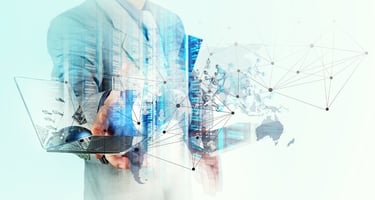Using Micro-segmentation to Secure Network Traffic Within the Data Center
How the Software-defined Method Has Made Its Way Into Backups
Backups Commanded By Software Controls
Backups in a Software-Defined World
The concept of “software-defined” has become the cutting-edge of the data center, making it possible to virtualize compute, storage, and networks using API calls. Software-defined data center operations are effectively touchless and commanded entirely by software, and much of the enterprise is making its way toward adoption, while others have already successfully implemented SD methods. Now, this concept is extending into the backups space.
Software-defined backups automate backup and restore while enabling the ability to execute a restore independently and on demand. For instance, if an end user loses a piece of critical data, but isn’t sure where to find it, software control can be used to find the data and bring it back when it’s needed. In essence, the task of retrieving something an end user might’ve lost is simplified.
SD Backups vs the Traditional Approach
Consider the typical backup environment. Every individual backup requires manual deployment, configuration, monitoring, and provisioning. So, if a particular environment backs up onto 20 servers, for example, it would be necessary to log into 20 individual servers, install backup software, and return to the backup server to configure 20 individual servers. It’s arduous, but necessary.
Most often, an individual in IT is responsible for backups, backing up on a periodic basis and incrementally. If an end user has the need to restore data, it would be required to find the backup administrator to figure out where to retrieve lost data, and then go through a trial and error process to locate and potentially restore it.
Software-defined backup is user-centric and puts the restore process in the hands of the end user, eliminating the need to submit a ticket or track down the backup administrator for help. It brings the ability to back up either to traditional on-premise storage or the cloud through software control, ultimately using a policy-driven approach. This capability vastly improves backup and restore functionality.
Why Automated is the Way to Go
Applying the software-defined concept to backups takes significant guesswork and complexity out of the process. Virtualization eliminates the need for dedicated hardware, and delivers the ability to create backup policies in one centralized place.
- Makes backups easier for the end user
- Enables instant restore
- More cost-effective and efficient
- Scalability allows for backing up and restoring small or large amounts of data
- Simple to set up, configure, and use immediately
In the federal space, all agencies have a requirement to securely store backup data, as well as manage and enable recovery of data for a specific period of time. Software-defined backups are a simpler way to achieve this objective, featuring automated backup with instant recovery, as well as data archival and compliance. Further, SD backups can work for replication and disaster recovery.
August Schell remains at the forefront of emerging technologies, particularly those being developed within the software-defined space. If your agency or business would like to know more about how software-defined backups can replace your current strategy, reach out to an August Schell expert today, or call us at (301)-838-9470.


